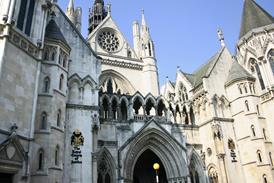Whether you or your firm do pro bono work or not, it is important to know about pro bono costs, says Toby Brown.
Before section 194 of the Legal Services Act 2007 was enacted, when a pro bono-assisted party won a civil case they could not get a costs order, because (obviously) they had incurred no costs. Yet, for nearly 10 years now, pro bono-assisted parties can obtain ‘pro bono costs’ if they win.
A surprisingly high number of people do not seem to know this.
So, if you are representing a fee-paying client in the normal way, it is obviously important that you (and your client) are aware that just because your opponent cannot afford a lawyer, and is instead represented pro bono, this does not mean that your client faces no adverse costs risk.
Equally, the regime does not affect the pro bono party’s risk of an adverse costs order against them if they lose. Accordingly, the aim is that there should be a level playing field in terms of costs risks.
Another important point to know is that the costs do not go to the winning pro bono party or their lawyer. Rather, by statute, pro bono costs are paid to the Access to Justice Foundation (AJF), which uses the money to support pro bono charities.
Practical steps
The simple rule, whether you are acting pro bono or facing a pro bono opponent, is to treat pro bono costs just like normal costs. They are available in all civil proceedings, from the county court up to the Supreme Court. The key distinction is that, as mentioned, the costs are paid to the AJF, and the amount is based on what the court would have awarded had the pro bono lawyer been charging.
So, if a case is compromised, a settlement agreement or a consent order can (and hopefully will) include pro bono costs payable to the AJF.
In pro bono litigation, it may therefore be useful for the pro bono lawyer to warn the other side that if (or when) they win, they will seek pro bono costs. This may help settle the case, given the level playing field as to costs risks.
Equally, if the matter proceeds to a court hearing, the pro bono-assisted party should file and serve a statement showing what costs they would have claimed, had the lawyer been charging at their normal rate. Form 260 can be used, but is not mandatory. At the conclusion of the hearing, the court is asked to make a pro bono costs order under CPR 46.7. The expectation is that the court will simply assess how much it would have awarded in normal costs had the lawyer been charging, and then order that equivalent sum be paid to the AJF.
Some finer points
Where a party has a mixture of regular fee-paid representation, but also benefits from pro bono representation, both types of costs can claimed. So, if a party ran out of money, but the lawyers continued to work on a pro bono basis, normal costs and pro bono costs can be recovered for these different periods. Another example might be where a solicitor is litigating the case on a CFA, but counsel assists pro bono for a hearing.
Another point is that the normal part 36 costs consequences do not automatically apply to pro bono costs. Rather, if the claimant accepts a part 36 offer, they can then apply to court for pro bono costs (or hopefully agree costs with the defendant).
Summary assessment of pro bono costs is encouraged, but if necessary detailed assessment can occur.
Finally, where pro bono costs are awarded or agreed, the pro bono lawyer should notify the AJF (costs@ATJF.org.uk ). The paying party should pay the costs directly to the AJF. If they fail to pay, enforcement proceedings can be expected.
Conclusion
Not all lawyers are aware of pro bono costs, but whoever you represent, it is important to be aware of this integral part of the costs regime. And where pro bono costs are awarded, the money will be used to help support further access to justice.
Toby Brown is a barrister at South Square, and a trustee of the Access to Justice Foundation.
Find out more
You can learn more about applying for a pro bono costs order in Toby Brown’s OnDemand webinar.

















